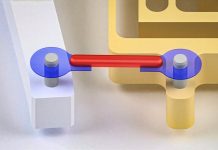
Robot vacuum cleaners are already common in many homes, quietly sweeping floors while we go about our day.
But a new study from the University of Bath in the UK suggests these robots could do a lot more than just vacuum—and we’re missing out on their full potential.
The researchers argue that most robot vacuums are only active for under two hours each day, spending the rest of the time sitting idle.
In a world where we constantly strive to be more productive, it seems strange that our smart machines aren’t being used to their fullest.
So, the research team came up with more than 100 ways that domestic robots could help out around the house when they’re not busy cleaning.
In their experiments, the team showed that with just a few tweaks, a robot vacuum could take on extra roles.
They reprogrammed a Roomba to become a mobile phone charger that seeks out users to top up their phones. They turned it into a workout projector that displayed exercise videos on the wall and ceiling.
They also used it as a mobile signpost to let others know when someone was in a meeting, and even as a home monitor that could watch over things like the oven remotely.
Lead researcher Yoshiaki Shiokawa said that people often see devices like robot vacuums or lawnmowers as simple, single-use tools.
But with some smart programming, these robots could become valuable assistants, able to move through a home and take on many different jobs. Their ability to move around gives them a big advantage over stationary devices like smart speakers or thermostats.
The study is one of the first to explore how a robot’s mobility can be used to add real value to our daily lives.
With the right attachments, like arms or small carts, these robots could be helping us care for pets, reminding us to take medicine, watering plants, or even bringing us breakfast in bed. Some of these ideas are already possible, while others—like predicting our needs based on daily routines—are still in the early stages.
As the popularity of domestic robots continues to grow, with the market expected to expand nearly 19% annually through 2028, the researchers believe this is the right time to think bigger. Co-author Dr. Adwait Sharma emphasized that idle robots present a unique chance to improve home life.
By turning these smart machines into multi-tasking helpers, we could make our homes run more smoothly and give ourselves a little extra help each day.
Source: University of Bath.



